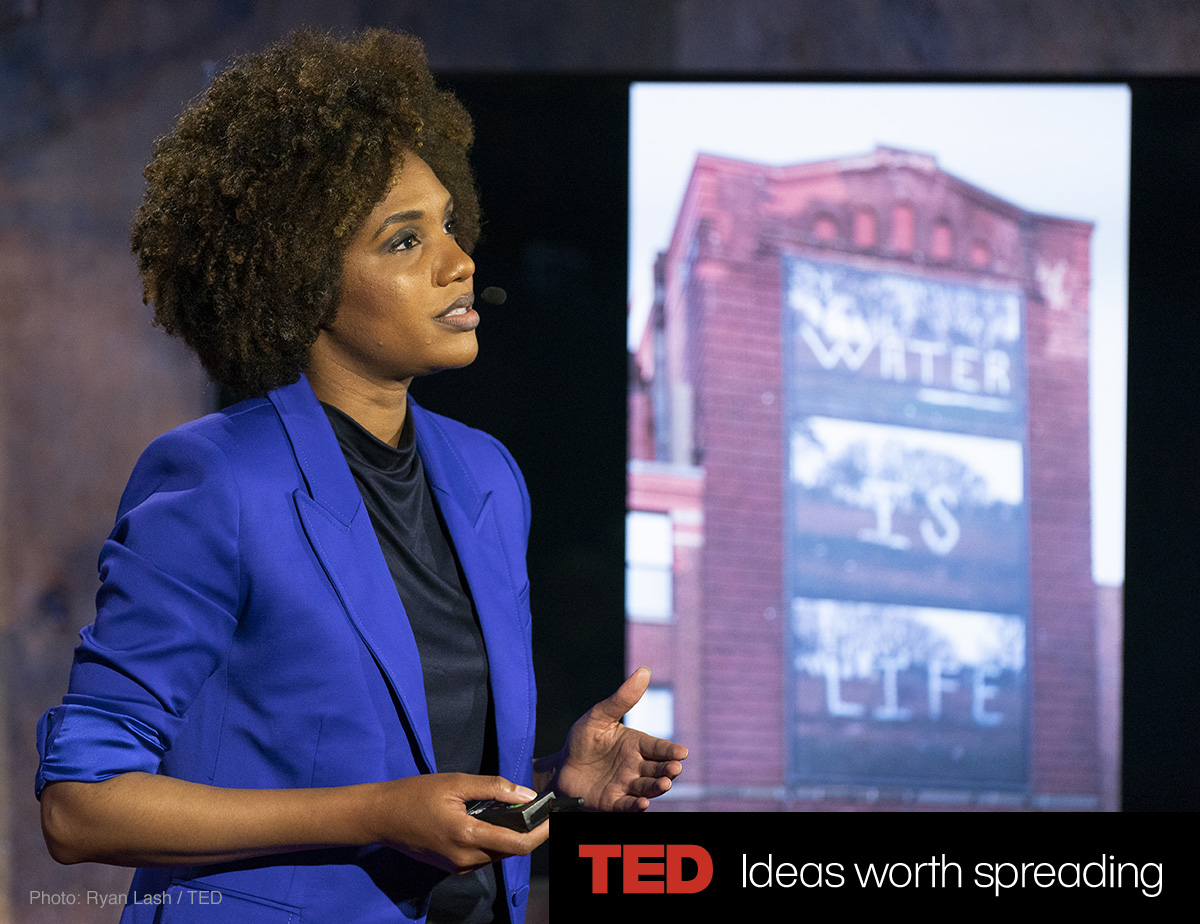
LaToya Ruby Frazier asks for justice for the communities in Flint, Michigan, with a flag that reminds us of the number of days residents have been living without water as of April 25th, 2018. The photograph is from her 2016 work Flint is Family, where Frazier spent five months with three generations of Flint women who suffer and still thrive as they face the water crisis in Flint–“the worst man-made environmental catastrophe in recent national memory.”
Frazier states: “The number 1,462 is the exact amount of days Flint residents have lived without new pipes since the lead leaching took place. (And yes, that is a real photograph I took in Flint, where they were keeping locked up pipes behind barbed wire.)
Exact location and company:
American Pipe
4906 Horton Avenue, Flint MI 48505″
LaToya Ruby Frazier’s FLINT, 1,462 days and counting man-made water crisis is on view April 25th – May 16th, 2018 at:
– Creative Time Headquarters, 59 East 4th Street, NY, NY
– 21C Museum Hotel Durham, 111 Corcoran St, Durham, NC
– Atlanta Contemporary, 535 Means Street, NW, Atlanta, GA
– The Commons, in partnership with the Spencer Museum of Art, University of Kansas, 1340 Jayhawk Blvd, Lawrence, KS
– Herbert F. Johnson Museum of Art, Cornell University, 114 Central Ave, Ithaca, NY
– John Nicholas Brown Center for Public Humanities and Cultural Heritage, Brown University, 357 Benefit Street, Providence, RI
– KMAC Museum, 715 W Main St, Louisville, KY
– MASS MoCA, 1040 Mass MoCA Way, North Adams, MA
– Mann Library, Ag Quad, Cornell University, 237 Mann Drive, Ithaca, NY
– Mid-America Arts Alliance, 2018 Baltimore Ave, Kansas City, MO
– Museum of Contemporary Art Detroit, 4454 Woodward Ave, Detroit, MI
– RISD Museum, 224 Benefit Street, Providence, RI
– SPACE, 536 Congress Street, Portland, ME
– Texas State Galleries, 233 West Sessom Drive, San Marcos, TX
– The Union for Contemporary Art, 2423 N 24th Street, Omaha, NE
– University of South Florida Contemporary Art Museum, 3821 USF Holly Drive, Tampa, FL
– Zimmerli Art Museum, Rutgers University, 71 Hamilton Street, New Brunswick, NJ
Read more…
Courtesy of: CreativeTime.org












